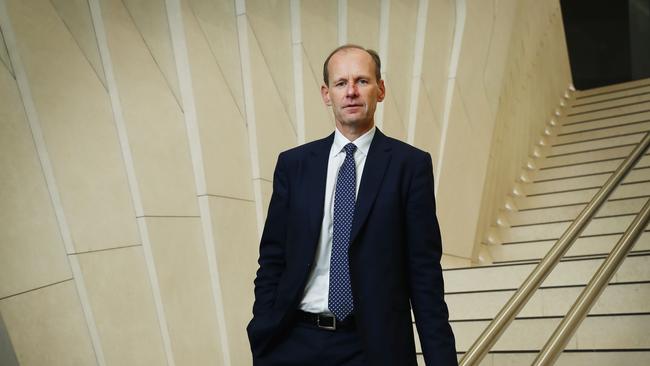ANZ CEO to tweak home lending process in battle for market share

Like Andrew Thorburn’s experience at National Australia Bank, Shayne Elliott is finding that the going gets tough once the applause starts to fade from a successful program of asset sales.
The regulatory environment is hostile, competition in the mortgage market is intense, and growth is elusive.
So, for all the good news coming out of ANZ Bank’s institutional division — and who would have thought at anytime over the last five years or more that the troubled business would “come to the rescue” of an ANZ profit result — the truth is that Australia has put in a stinker.
It’s not all Elliott’s doing; certainly the market hasn’t helped.
Home loan applications to the major banks, including ANZ, are down 20 per cent in a year, most of it in the sparse investor segment.
Competition from offshore banks like HSBC and ING has also lifted several notches, and regulators have switched their blackout lenses for magnifying glasses, probing the slightest hint of inappropriate market behaviour.
However, Elliott and his management team have made some bad calls.
He admitted that credit standards in home lending were tightened too far, partly due to a stricter interpretation of responsible lending laws, and partly in response to ANZ’s assessment of the risk and reward equation.
The ANZ chief said he regretted neither change because it was the right thing to do, but implementation should have been more thoughtful and balanced instead of putting unreasonable stress on the bank’s processes, people and customers.
The industry, he said, had hummed like a production line in response to three decades of stable growth.
While it was an efficient process that delivered high returns, it broke down badly for some customers, as the Hayne royal commission found.
The wash-up for the March half-year was that interest income for the Australia division from continuing businesses fell 5 per cent compared to a year ago, or 1 per cent compared to the September half.
If there’s any upside from a bad judgment call, it’s that the fix shouldn’t be all that difficult.
Elliott is not about to turn the credit taps back to maximum throttle by writing loans at 95 per cent of a property’s valuation.
Instead, he told Four Pillars that 50 more loan assessors had been hired to smooth the flow of applications, now that a higher proportion require manual intervention to verify income and expenses.
“We’re going to get some balance back,” he said.
“I don’t think we’re back to growing market share; it will take some time — several months — to have an impact.”
Email: gluyasr@theaustralian.com.au
Twitter: @Gluyasr



